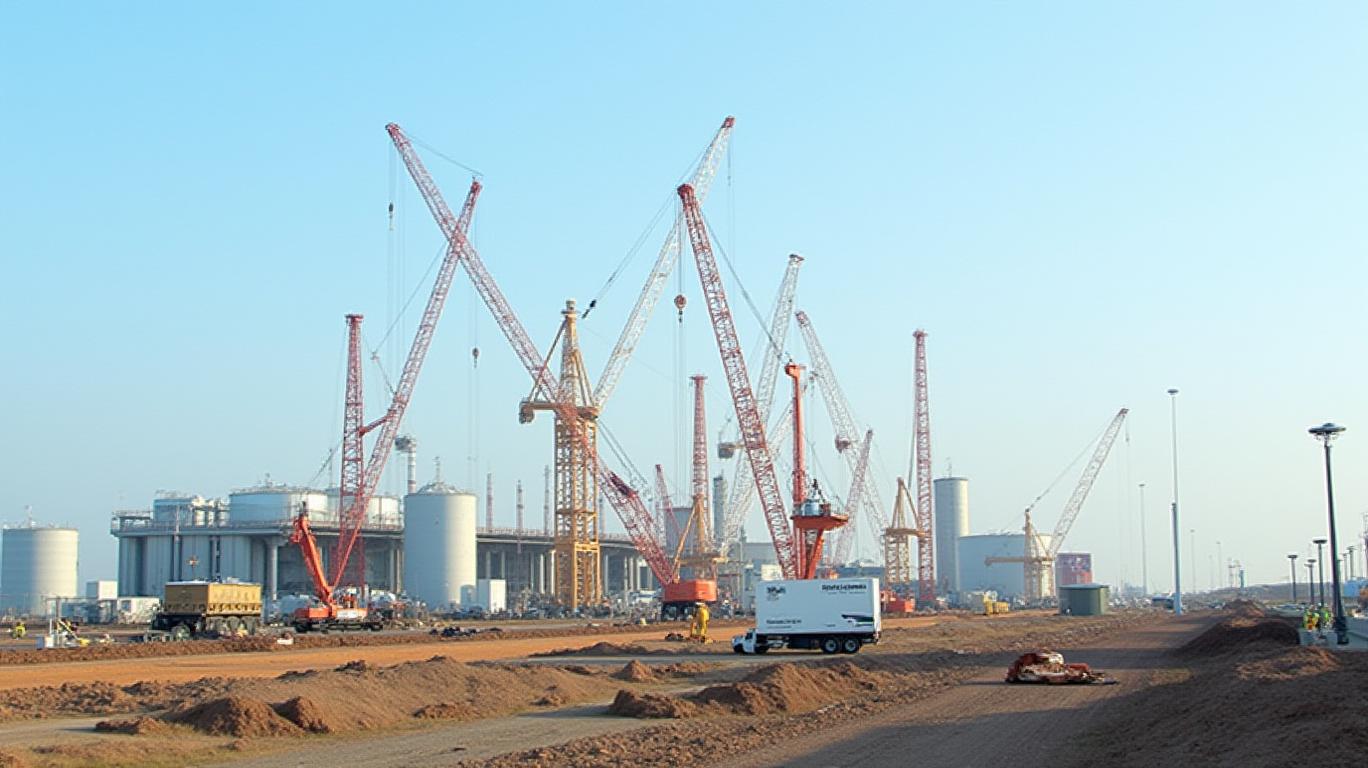Venture Global’s CP2 LNG Project: A Regulatory Milestone with Global Implications
The U.S. Federal Energy Regulatory Commission (FERC) and Department of Energy (DOE) have cleared major hurdles for Venture Global’s CP2 LNG project, marking a pivotal moment for U.S. energy dominance and global liquefied natural gas (LNG) exports. With final regulatory approvals expected by May 2025, CP2 is poised to become the largest LNG terminal in the U.S., capable of exporting 28 million tonnes of LNG annually. This milestone positions the project at the center of a high-stakes debate over energy security, economic growth, and environmental sustainability.

Regulatory Triumph Amid Opposition
The CP2 project has secured two critical approvals:
1. FERC’s Final Environmental Report (May 2025): After a court-ordered re-examination of air quality impacts, FERC concluded that cumulative emissions from CP2’s operations would not breach regulatory thresholds. The final environmental impact statement (EIS), due May 9, 2025, will formalize this decision.
2. DOE Export Authorization (March 2025): The DOE granted CP2 the greenlight to export LNG to non-Free Trade Agreement (non-FTA) countries, a key step for global market access. This authorization aligns with the Trump administration’s “energy dominance” agenda, emphasizing LNG as a tool to diversify global energy supplies.
However, the project faces sustained opposition. Environmental groups like the Louisiana Bucket Brigade have highlighted over 4,500 hours of permit violations since 2022, including unreported flaring and pollutant releases. A class-action lawsuit alleges securities law violations, while major energy firms, including BP and Shell, have petitioned FERC over contractual delivery disputes.
The Economic Case for CP2
The project’s economic potential is undeniable. With 20-year sales agreements in place with ExxonMobil, Chevron, and JERA, CP2 has secured a revenue foundation for decades. The terminal’s 36-train design, capable of processing 3.96 billion cubic feet of gas daily, will rival Qatar and Australia as a global LNG supplier.
Venture Global’s CEO, Mike Sabel, emphasizes that CP2 will create over 10,000 jobs during construction and generate $2 billion annually in local taxes and royalties. The project’s $3 billion in secured loans underscores investor confidence, even amid regulatory scrutiny.
Risks and Challenges
The path forward is not without obstacles:
- Environmental Litigation: Lawsuits by groups like the Natural Resources Defense Council could delay or restrict operations. A 2022 incident involving a 180,000-pound gas discharge into waterways has fueled public concerns about safety and compliance.
- Market Volatility: LNG prices are tied to global energy demand, which could fluctuate due to economic downturns or shifts in renewable energy adoption.
- Competitor Pressures: Rival projects in Texas, such as NextDecade’s proposed plant, face similar regulatory battles, creating competitive uncertainty.
Strategic Importance and Investment Implications
CP2’s success hinges on its role as a linchpin for U.S. energy exports. With Asia and Europe increasingly reliant on LNG, the terminal’s capacity to supply 28 million tonnes annually will strengthen U.S. geopolitical influence and trade balances.
Investors should monitor two key metrics:
1. FERC’s Final Order (July 2025): This will finalize the regulatory process, enabling the Final Investment Decision (FID) for Phase 1.
2. DOE’s Final Export License: Expected by late 2025, this will confirm non-FTA export rights, unlocking access to markets like Japan and South Korea.
Conclusion: A High-Reward, High-Risk Venture
Venture Global’s CP2 project is a testament to the U.S. LNG industry’s ambitions. With approvals nearing completion, the terminal’s 28 million-tonne capacity could add 10% to U.S. LNG exports, solidifying the nation’s position as a global energy leader. However, the project’s success depends on navigating environmental lawsuits, market risks, and operational compliance.
For investors, CP2 represents a strategic bet on LNG’s long-term role in the energy transition. While the project’s $20 billion price tag and legal battles pose risks, the secured contracts, geopolitical tailwinds, and projected 10,000+ jobs make it a compelling opportunity. As FERC and DOE clear final hurdles, the world will watch whether CP2 becomes a symbol of U.S. energy ascendancy—or a cautionary tale of regulatory overreach.
In sum, CP2’s regulatory greenlight is a milestone, but the true test lies in execution. For those willing to endure the volatility, this project offers a rare chance to profit from the intersection of U.S. energy policy and global demand.

Comments
No comments yet